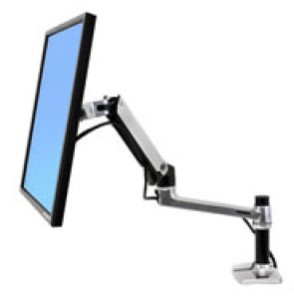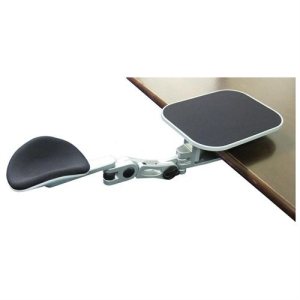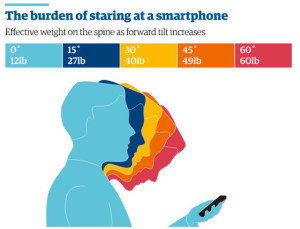Maintaining Optimal Posture at Work – No Matter the Workplace!
An important part of my dialogue with patients is how to optimize their ergonomic set ups at work. Creating an ergonomically sound set up is very important for spinal integrity, especially for people who suffer from neck and back pain. There are a lot of ergonomic products out there that can aid in creating proper posture at work. Below are descriptions of best ergonomic practices specific to different types of offices, as well as suggested products.
If You Work in a Cubicle
I get it. If you work among a sea of cubicles, you may not want to be the one person standing at a sit-stand desk. However, even with the confines of a cubicle, you can still optimize the space. First, make sure you are using a desktop monitor as your primary monitor. Then, make sure that the top of the screen is level with the top of your head. Try not to strain your head too far forward; try to keep your head back enough so that your ears are over your shoulders. If you mount the device above to your desk, it will allow you to pull the screen closer to your face so that you don’t have to strain your neck forward.
Also, try putting your keyboard on your lap so that your shoulders and trapezius muscles don’t tighten and inch up towards your ears. If you mouse a lot, consider the forearm support so that your shoulder doesn’t get tight while mousing for extended periods of time.
Finally, sitting on a stability ball for part of the day forces your back and core muscles to activate.
Private office
If you’re fortunate enough to have a private office, the ergonomic possibilities really open up. For one, you can use a sit-stand desk. Sitting for a full work day, day after day, leads to a vortex of mechanical wear and tear to your spine, which will ultimately result in pain. Extended sitting causes your low back and hip muscles to get weaker and, thus, fatigue faster. Once your muscles have fatigued, the passive structures of your spine—the ligaments and intervertebral discs—become the primary source of support. This will cause them to degenerate faster and also to become tighter in an attempt to provide more support.
This pain-inducing mechanism has become so prevalent that the mantra—“sitting is the new smoking”—has become common place. “Sitting is the new smoking” implies that sitting is simply bad for your health and the effects of it cannot be reversed through exercise. Thus, we simply need to sit less.
Fortunately, various sit-stand desks have flooded the market at more economic price points than their predecessors. IKEA offers a budget desk at less than $500 and I also stumbled upon a $22 hack made with IKEA spare parts. Heck, even just putting your monitor on a cardboard box and using an external keyboard will be sufficient.
In the field
It wasn’t until I moved to LA that I appreciated the sheer number of people working within the motion picture industry. Many of them work in pop-up type workplaces—they are shooting on location and set up a card table or, worse, use their lap—as a desk. Over time, this can create the dreadful head down posture. If you’re in this predicament, at a minimum, try to use an external keyboard so you can keep your shoulders relaxed. And if there are any cardboard boxes laying around, you can rig a sit stand desk by putting your laptop on the box. Unfortunately, there are a lot of ergonomic limitations to this temporary work environment. Thus, the best thing you can do is to take micro breaks. This means that every 20 minutes, you should change your position, stretch, or go for a 1-2 minute walk.
Indeed, movement (even if only for a few seconds) is just as important to your spine as maintaining good ergonomic position. The nerves, arteries, and veins that pass through your spine rely on movement to aid in the transport of nutrition. Moreover, ligamentous creep (the elongation of tissue from a constant load over time) takes place in as little as 20 minutes. Creep can have a detrimental effect on your spine as it makes the ligaments lax and, therefore, less able to protect your spine from injury.



